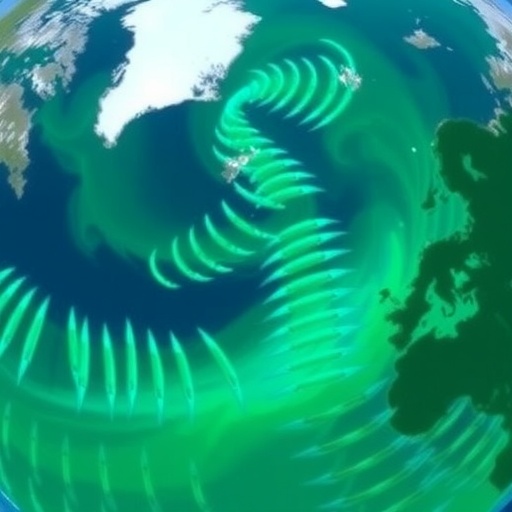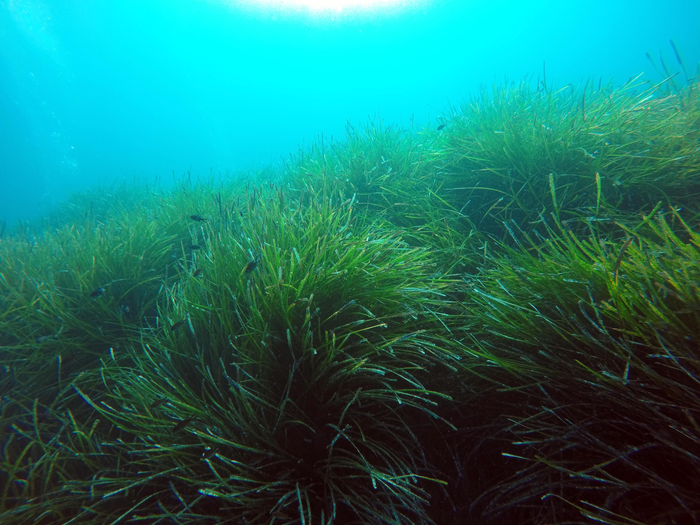DURHAM, N.C. — Over the past two decades, the color of our planet’s oceans has been quietly shifting in a remarkable and telling pattern: the waters at the poles are becoming greener, while those closer to the equator are turning bluer. This shift, revealed by a comprehensive analysis of satellite data, points to changing concentrations of chlorophyll, the green pigment found in phytoplankton, which are microscopic photosynthetic organisms forming the foundation of marine ecosystems. As these tiny oceanic plants influence both marine food webs and global carbon cycles, their shifting distribution heralds significant implications for Earth’s climate and the sustainability of fisheries worldwide.
Researchers led by Haipeng Zhao, a postdoctoral scientist associated with Duke University’s Nicholas School of the Environment, alongside notable collaborators such as Nicolas Cassar and Susan Lozier, analyzed nearly two decades of satellite-derived data collected by NASA instruments. These instruments continuously scan Earth’s surface light wavelengths, enabling scientists to estimate chlorophyll concentrations across the vast open ocean. By focusing specifically on offshore waters—excluding coastal regions complicated by suspended sediments and differing optical properties—the researchers ensured a more consistent and accurate global assessment of phytoplankton biomass trends.
The data, spanning from 2003 through 2022, demonstrate a consistent reduction of chlorophyll in tropical and subtropical latitudes contrasted by notable increases at higher latitudes near the poles. This latitudinal gradient is reminiscent of terrestrial observations over the past several decades, where rising global temperatures have spurred increased leaf cover and “greening” of land surfaces. However, detecting and quantifying similar trends across the ocean surface has been a formidable challenge due to the dynamic nature of marine environments and the limitations of remote sensing technologies.
.adsslot_OeqzuGlf7X{width:728px !important;height:90px !important;}
@media(max-width:1199px){ .adsslot_OeqzuGlf7X{width:468px !important;height:60px !important;}
}
@media(max-width:767px){ .adsslot_OeqzuGlf7X{width:320px !important;height:50px !important;}
}
ADVERTISEMENT
To navigate these complexities, the scientific team drew inspiration from socioeconomic methodologies, adapting tools typically used to describe wealth distribution—namely, the Lorenz curve and the Gini index—and applied them innovatively to quantify changes in chlorophyll distribution across global waters. This analytic approach revealed an intensification of chlorophyll concentration in already-green polar waters, akin to wealth accumulation, while simultaneously exposing a decline in other regions, reinforcing the “rich-get-richer and poor-get-poorer” analogy applied to marine productivity.
Further dissecting the drivers behind these trends, researchers evaluated environmental variables such as sea surface temperature, wind speed, available light for photosynthesis, and the mixed layer depth of the ocean, which reflects the vertical mixing of surface waters due to wind, waves, and currents. Among these factors, only sea surface temperature demonstrated a significant correlation with the changes in chlorophyll, underscoring the pivotal role of warming seas in altering phytoplankton distribution. Nonetheless, the researchers exercised caution, emphasizing that this two-decade time frame remains insufficient to conclusively attribute these findings directly to anthropogenic climate change or to exclude influences from natural climate oscillations like El Niño.
The implications of shifting oceanic chlorophyll extend beyond mere color changes. Phytoplankton act as essential carbon sinks through their photosynthetic uptake of atmospheric carbon dioxide. Upon death, these organisms sink, carrying carbon into the ocean’s depths where it may be sequestered for extended periods. Whether carbon is stored in shallow waters that readily exchange gases with the atmosphere or transported to deeper zones that trap carbon over longer timescales can dramatically influence the effectiveness of the ocean in moderating global warming. Thus, poleward shifts of phytoplankton could reshape the ocean’s role in the carbon cycle and, by extension, the global climate system.
Moreover, the observed decline in phytoplankton biomass within equatorial regions poses critical concerns for marine food webs and human societies dependent on them. Many nations, particularly in the Pacific Islands and other low- to middle-income coastal states, rely heavily on fisheries that stem from abundant phytoplankton-based food chains. A sustained reduction in these foundational organisms risks cascading disruptions through marine ecosystems, potentially destabilizing fisheries, compromising food security, and undermining local economies reliant on ocean resources.
This research also brings to light the intricate balance maintained in marine ecosystems. The visible “greening” of polar oceans may initially appear positive or indicative of increased productivity; however, such changes might reconfigure existing food web structures and nutrient cycling patterns. As phytoplankton communities adjust their spatial distribution, species composition, and timing of blooms, predators and other dependent organisms must adapt or face decline. These ecological perturbations could lead to a redistribution of fisheries, shifting economic opportunities and challenges across national and international waters.
While the satellite-driven insights offer a groundbreaking window into oceanic changes, the authors underscore the importance of continued and enhanced monitoring. Long-term data collection beyond the early 21st-century horizon will be indispensable for deciphering sustained trends from transient climatic variability. Advancing oceanographic observational networks, integrating in situ measurements with remote sensing, and expanding modeling efforts will collectively allow for more nuanced understanding and predictive capabilities regarding phytoplankton dynamics and their broad environmental and societal consequences.
Technological innovation in remote sensing has been instrumental in unveiling these patterns. The ability of NASA’s instruments to frequently scan and quantify ocean color across the entire globe every two days provides unprecedented temporal and spatial resolution. Yet, challenges remain, especially in accounting for atmospheric interference, sunlight angle, and sensor calibration over extended periods. Improvements in data processing and algorithm development have been pivotal in enhancing accuracy and reliability, encouraging optimism about future capabilities to monitor and manage ocean health in a changing climate.
In summary, the discovery of oceanic poleward greening and tropical blueing draws attention to a fundamental biological response to environmental change and highlights the delicate interplay between physical climate variables and marine ecosystems. The findings extend the well-documented terrestrial greening narrative into the marine realm, revealing patterns that are both complex and consequential. These emergent trends warrant close scientific scrutiny, informed policy interventions, and global cooperation to address potential impacts on biodiversity conservation, climate regulation, and human livelihoods dependent on the sea.
As humanity faces rapid environmental transitions, understanding the oceans’ biological responses is paramount. Phytoplankton, though microscopic, play monumental roles in carbon sequestration, climate moderation, and the sustenance of marine food webs. Ongoing research illuminating their changing global distributions is crucial for forecasting future ecological states and guiding mitigation and adaptation strategies that seek to preserve the delicate balance sustaining life on Earth.
Subject of Research: Not applicable
Article Title: Greener green and bluer blue: Ocean poleward greening over the past two decades
News Publication Date: 19-Jun-2025
Web References: http://dx.doi.org/10.1126/science.adr9715
References: DOI: 10.1126/science.adr9715
Keywords: Ocean color change, chlorophyll concentration, phytoplankton distribution, satellite remote sensing, global carbon cycle, marine ecosystems, climate variability, sea surface temperature, marine food webs, ocean greening, ocean bluing, Lorenz curve, Gini index
Tags: chlorophyll concentration trendsclimate change and oceansDuke University marine researchenvironmental implications of ocean color changesglobal carbon cycle and phytoplanktonglobal fisheries sustainabilitymarine ecosystem impactsoffshore waters chlorophyll assessmentphotosynthetic organisms in oceansphytoplankton distribution changespolar ocean greeningsatellite data analysis for oceans






